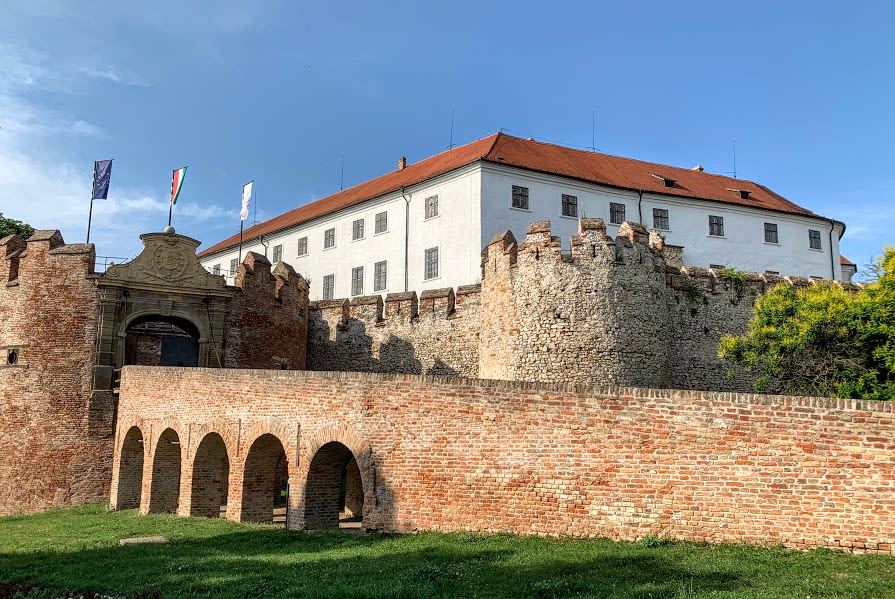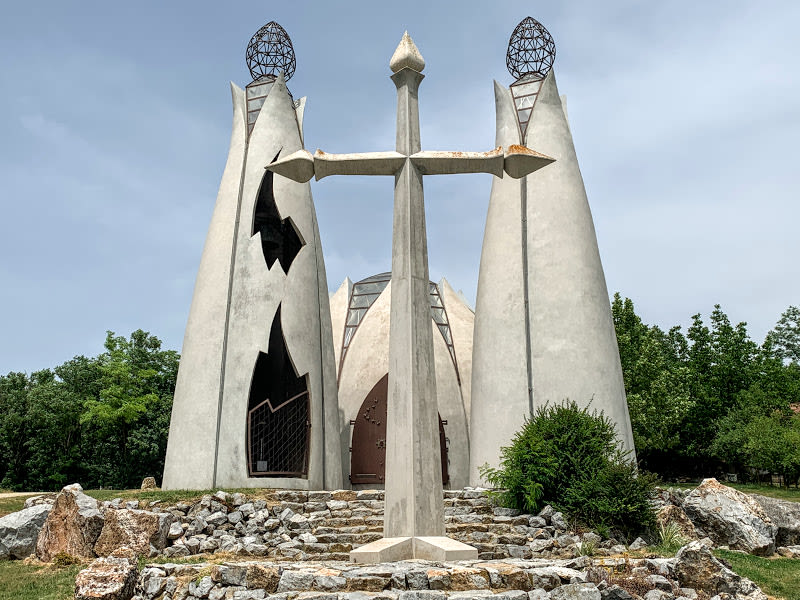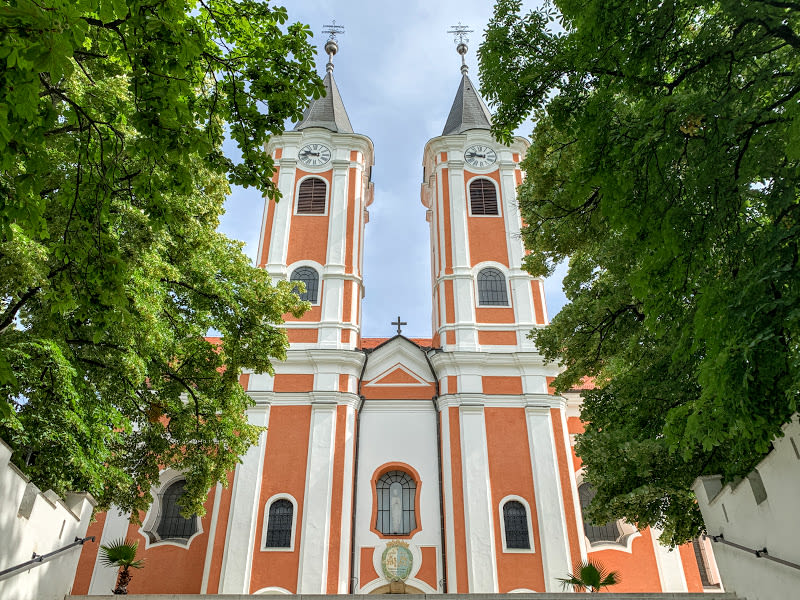Winery visits should be on the top of your agenda, but there are fun things to do in Villány even if you aren’t an oenophile.


Memorial Park in Mohács (location; open daily from 9 a.m. to 6 p.m.; HUF 1,500 admission)
The 1526 battle of Mohács, after which Hungary lost its independence for centuries to come, is often regarded as the most tragic in the country’s history. This memorial park, a bit outside the city of Mohács, stands where the Ottoman army decimated 15,000 Hungarian troops. Wooden grave markers (and occasionally some excavated mass graves) are peppered throughout the expanse, which is anchored by the crown-shaped visitor’s center. Mohács is located a half-hour drive from Villány toward Budapest, so you could make this the first or the final stop of your trip if you’re visiting from the capital city.

Siklós Castle (location; open daily from 9:30 a.m. to 6:00 p.m.; HUF 1,900 admission)
The 10,000-resident Siklós, the biggest town in the wine region, is best known for the 13th-century massive fortress that sits above it. Initially it belonged to the Garai family, one of the most powerful in medieval Hungary, before passing through Ottoman, Habsburg, and other hands. Today, the place functions as a museum, showcasing torture chambers and Gothic and Renaissance remains, but you’re also here for the striking views from the outdoor terrace of the top floor.

Malkoç Bey mosque of Siklós (location; open daily for visitors except for Friday)
Siklós’s one surviving mosque — it used to have seven — bears witness to the period when the Ottoman Empire occupied parts of Hungary. The 16th-century octagonal brick-and-stone building was nicely renovated in 1993; the Turkish government provided the current interior decorations. The mosque today is still functional, mainly Bosnian refugees from Siklós visit it.

Nagyharsány statue park (location; open daily from 9 a.m. to 7 p.m.)
What used to be a limestone quarry in the side of Szársomlyó, the tallest hill of Villány, has been transformed into an open-air art exhibit. Since 1968, a motley collection of abstract statues stand here made by Hungarian and foreign sculptors. The artists’ colony is based just a short walk away in the striking Gyimóthy Villa, once owned by a wealthy wine merchant, which is also worth a peek.

The villages of Villánykövesd and Palkonya (location)
These two atmospheric villages are packed with clusters of adorable, gleaming white winery buildings built by German winemakers in the 19th century. In Palkonya, there’s an eye-catching red-domed, round church, commissioned in 1816 by the local feudal landlord, the Batthyány family.

Megbékélés (Appeasement) Chapel of Beremend (location)
György Csete (1937-2016) was a key figure within Hungary’s organic movement of architecture. Along with the better known Imre Makovecz, he believed that buildings need to form closer connections with their natural environments. His buildings are notoriously hard to dissect so it’s better to let them sink in on a sensual level. The 1998 Megbékélés (Appeasement) Chapel, located in the border town of Beremend, is dedicated to refugees of the Yugoslav Wars, which took place just across the border from here.

Pilgrimage site of Máriagyűd (location)
This collection of beautifully maintained clerical buildings is a popular destination for Roman Catholic pilgrims from near and far (in the 18th century, people came to Máriagyűd to pray to Virgin Mary to survive the plague). Apart from a frescoed Baroque church and monastery, there’s an open-air place of worship and a row of ceramic statues in the hillside depicting the crucifixion of Jesus.

Batthyány - Montenuovo mausoleum (location; open on Tuesday, Thursday, Saturday, Sunday from 2 pm. To 5 p.m.)
If you’d like an idea of how the aristocracy was laid to rest in 19th century Hungary, stop by the cemetery of Bóly near Villány. The oversized, Romanesque Revival mausoleum holds the remains of two distinguished families that lorded over the area for centuries. You can also glimpse at their former estate, located in the center of town, although it currently houses a facility for the mentally disabled and can’t be visited.